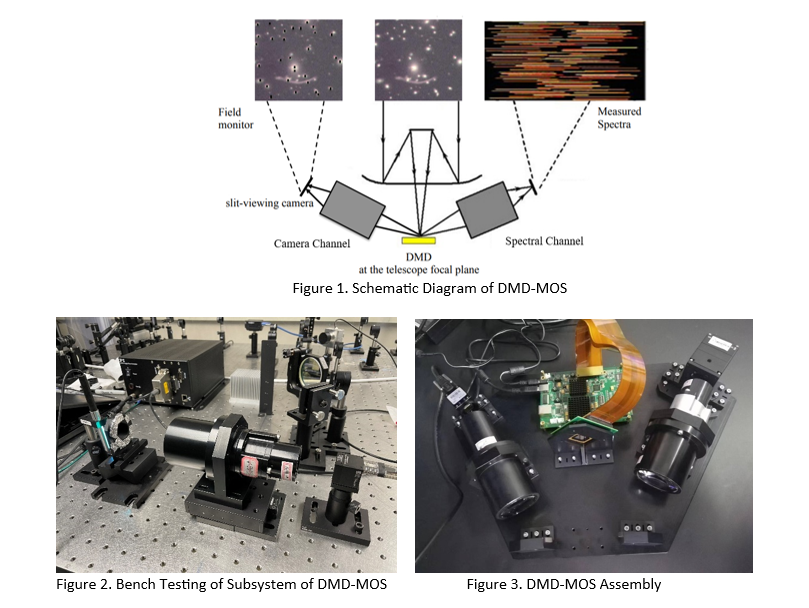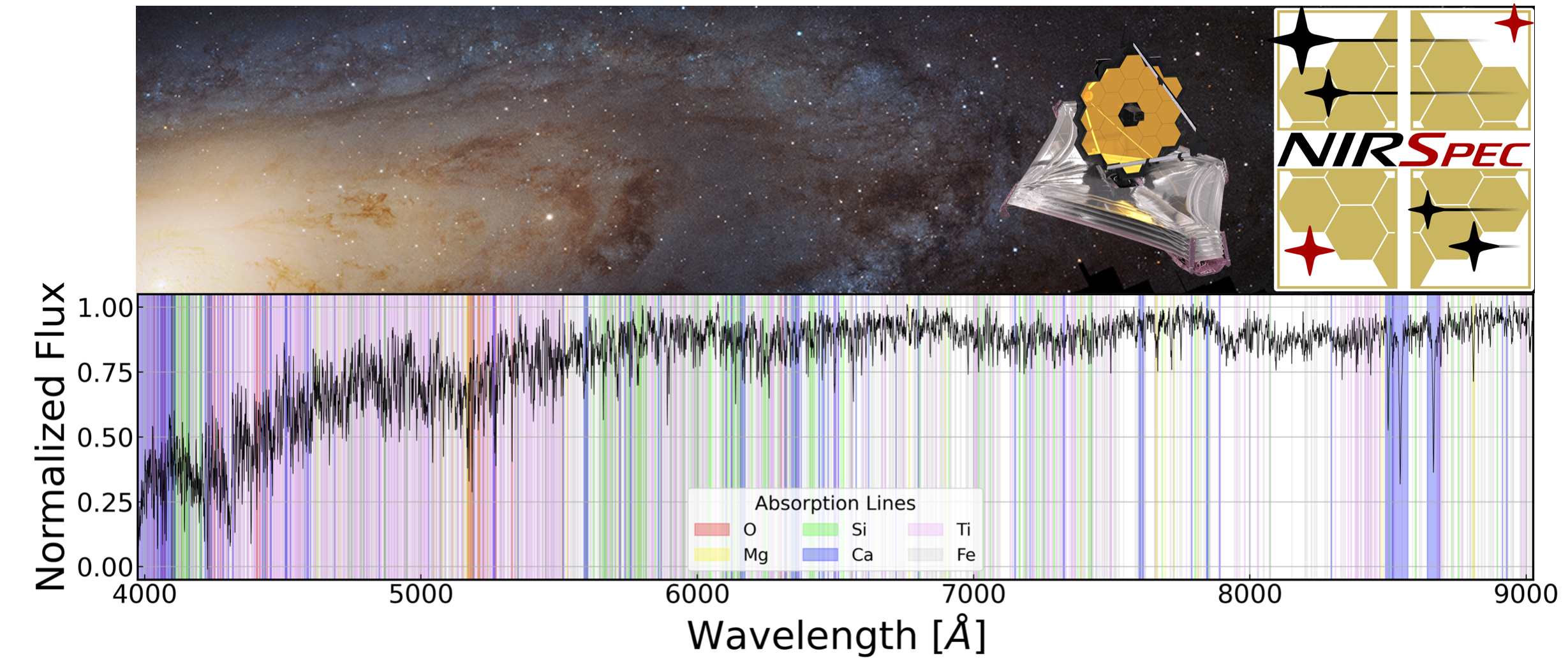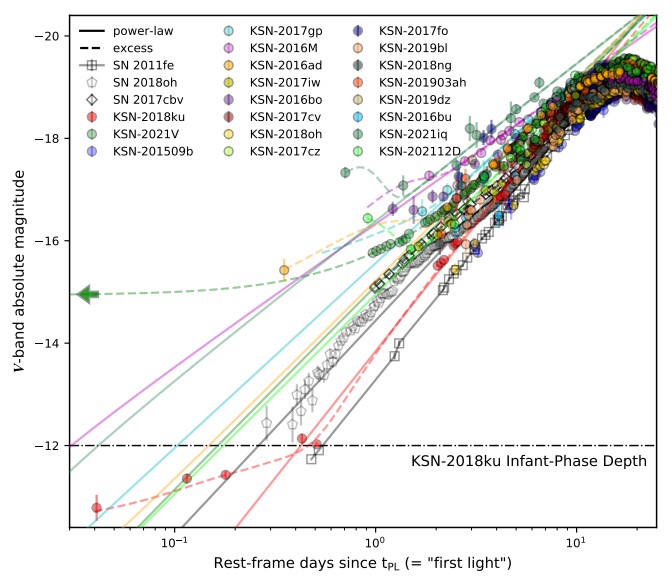
2025 SURP PROJECTS
2025 SURP PROJECTS
1. Turbulence in Low Rayleigh Number Red Giants
We would carry out theoretical (analytical and/or numerical) considerations of how convection in a red giant star behaves, hoping, in the long run, to understand how this affects the planetary system around stars like the Sun.
This project will be supervised by Prof. Yanqin Wu.
Preferred skills for applicants:
Computing, Physics
2. DMD-based multi-object spectrograph calibration and testing
Multi-object spectrographs play a crucial role in a variety of science cases in astronomy. The Digital Micromirror Device Multi-Object Spectrograph (DMD-MOS) is an innovative and elegant approach to multi-object spectroscopy that relies on micro-electromechanical (MEMS) mirrors to pick off light from selected targets in the acquisition field to channel into the spectroscopic arm of the instrument. This approach eliminates the need for fixed MOS masks, fiber positioning robots, and various other configurable slit technologies found in modern MOS spectrographs. We have completed most of the prototype development and initial assembly. DMD-based spectrographs is currently undergoing testing and calibration in the lab, and will be integrated with the E. C. Carr Astronomical Observatory’s 0.5-m telescope. Testing and iterative development in this project will play a critical role in evaluating the feasibility of utilizing DMD-MOS for future ground- and space-based multi-object spectroscopy, emphasizing its potential to bring transformative advancements to the field.
This project will be supervised by Dr. Shaojie Chen.
3. Exploring New Frontiers in Galactic Archaeology with JWST
The absorption features imprinted on a star’s spectrum encode its physical structure, chemical composition, and motion through space, which in turn provide a fossil record of the host galaxy’s chemical and dynamical evolution over cosmic time. JWST’s unique spectroscopic capabilities enable efficient high-quality resolved star spectroscopy in the Local Group’s most distant, faint, and crowded galaxies. As such, JWST has the potential to shine new light on the evolution of neighboring galaxies and their stellar populations. However, because of its novelty, the domain of JWST resolved star spectroscopy is largely unexplored, and there remain many unanswered questions regarding optimal strategies for collecting, reducing, and analyzing this valuable data. This project offers several opportunities depending on student interest and data availability to make direct contributions to some of the first JWST programs collecting stellar spectroscopy outside of the Milky Way (see 1 and 2). The project may involve one or more of the following undertakings: i) developing novel machine learning methods for measuring stellar chemistry from JWST spectroscopy, ii) refining the JWST reduction pipeline for crowded field point-source spectroscopy, iii) preparing for the chemo-dynamical analysis of JWST observations in Local Group galaxies, and iv) designing optimal observing strategies for future programs.
1 JWST-GO-3788: Alpha Elements and the Baryon Cycle in Isolated Dwarf Galaxies (https://ui.adsabs.harvard.edu/abs/2023jwst.prop.3788W/abstract)
2 JWST-GO-4735: A Closer Look at the Formation and Evolution of M31’s Inner Disk (https://ui.adsabs.harvard.edu/abs/2024jwst.prop.4735S/abstract)
This project will be supervised by Dr. Nathan Sandford, Prof. Ting Li, and Prof Jo Bovy.
Preferred skills for applicants:
Experience in Python. A familiarity with statistical inference and machine learning is preferred but not required.
*Project awaiting funding to move forward
4. Time Domain Science with Cosmology Telescopes
millimetre will tell us important new things about these objects. The next generation CMB experiments, like the Simons Observatory, will yield an order of magnitude more data, and have time domain science as part of their explicit scientific goals. In this project we invite students to explore such possibilities with us and to think of interesting ways to use CMB datasets for time domain science. The project can be tailored based on the student’s interests will likely involve analysis of maps and/or timestream data.
This project will be supervised by Prof. Adam Hincks and Dr. Yilun Guan.
Preferred skills for applicants:
Experience in Python.
5. Exploring Local Star Formation Processes Through Stellar Populations
Young stellar populations provide a fossil record of the star formation event that formed them, preserving the history of the parent cloud. The Gaia spacecraft has made this stellar record more accessible than ever before, providing positions, velocities, and luminosities for nearly 2 billion stars in the Milky Way. This data is the basis for the SPYGLASS (Stars with Photometrically Young Stellar Populations Around the Solar System) Program, a project to identify new young stellar structures in the solar neighbourhood and use them to reveal the patterns guiding local star formation.
Student projects will use the SPYGLASS dataset to explore one of several unexplained features of the local star formation record. Potential projects range from in-depth studies of individual star-forming regions that seek to explain features such as age gradients, to the characterization of dynamical substructure in larger stellar complexes, to broader survey work to understand the relative importance of different star formation processes. The exact nature of the project will be subject to the specific interests of the students hired.
The students chosen will gain experience in scientific python coding, writing, and presenting, with the goal of publishing the result. Depending on the project, there may also be opportunities for running and interpreting simulations, as well as planning and participating in remote observing runs at major observatories.
See https://www.rkerrastro.com/spyglass-program for an interactive overview of the SPYGLASS dataset.
This project will be supervised by Dr. Ronan Kerr.
Preferred skills for applicants:
Experience in Python.
6. Development of instrumentation for radio astronomy applications
In this project, students will collaborate closely with teams from the University of Toronto Radio Astronomy and InstrumentatioN (UTRAIN) Lab and the Long Wavelength Lab (LWLab). They will actively engage in the development, characterization, and deployment of instrumentation tailored for radio astronomy applications. This includes radio antenna and analog receiver design, algorithmic development for digital correlators, and data analysis for instruments like the Canadian Hydrogen Intensity Mapping Experiment (CHIME), CHIME Fast Radio Burst (CHIME/FRB), the CHIME/FRB Outriggers program, the Canadian Hydrogen Observatory and Radio-transient Detector (CHORD), the Canadian-CHilean Array for Radio Transient Studies (CHARTS), and ongoing instrumentation initiatives at the Algonquin Radio Observatory (ARO).
This project will be supervised by Prof. Juan Mena-Parra and Prof. Keith Vanderlinde.
Preferred skills for applicants:
Students should have a strong interest in astrophysics and instrumentation and a willingness to learn new skills. Students will get the most out of this research position if they have experience programming in Python or equivalent.
7. Gas kinematics in barred galaxies
Recent studies highlight the crucial role that bars have on the evolution of galaxies. For example, strong bars (such as NGC1300) can drive gas inflows, potentially triggering central starbursts and cause eventual quenching of their hosts. However, it remains unclear whether weak bars are also able to cause this inflow of gas.
To investigate this, we have obtained spectroscopic observations of 21 galaxies (7 strongly barred, 7 weakly barred, and 7 unbarred) using the Isaac Newton Telescope (INT) in La Palma. This project involves a full analysis of this data. The student will start with the raw spectroscopic data, reduce it, and then use a spectrum fitting tool (e.g. pPXF) to extract gas kinematics. The results will reveal whether gas inflows are significantly different between strong and weak bars.
Through this project, the student will gain hands-on experience in reducing astronomical data and learn how to apply widely used analysis tools. Finally, they will interpret their findings within the broader context of galaxy evolution.
This project will be supervised by Dr. Tobias Géron and Prof. Maria Drout.
Preferred skills for applicants:
Proficiency in Python.
8. The effect bar kinematics on galaxy evolution
Recent studies highlight the crucial role of bars in galaxy evolution. For example, bars (like the one in NGC1300) can drive gas inflows, potentially triggering central starbursts and eventual quenching of its host. While the importance of bar strength and length has long been recognized, more recently it is becoming clear that bar kinematics—how the bar rotates within the galaxy— is also important.
In previous work, we measured the bar kinematics of about 200 galaxies and found that the slowest and strongest bars drive the most significant impact on their host galaxies. We hypothesize that bar kinematics may correlate with other observables, such as gas fractions, dark matter content, merger rates, supernova rates, bulge prominence, and AGN activity. The aim of this project is to explore whether bar kinematics affect galaxies in other ways.
This is an exploratory project, and its direction will evolve based on findings. There are a number of projects that students can do, depending on their own interests. This can vary from data analysis (e.g. using large-scale morphological catalogues and IFU data) to software development (e.g. contribute to the code to measure the bar kinematics more robustly). Feel free to get in touch if you’re interested, and we can discuss the details together.
This project will be supervised by Dr. Tobias Géron and Prof. Maria Drout.
Preferred skills for applicants:
Proficiency in Python.
9. Study of Infant Supernovae and Peculiar Optical Transients
Supernovae studies have been central in moving modern astronomy forward, which is best described as “seeding the elements and measuring the Universe.” Infant supernovae that are detected within a few hours from the explosion are of particular interest and importance since they have crucial information for how supernovae explode. They are also prime targets for neutrino and/or gravitational wave detection. Using the new KMTNet facility, which provides 24-hour continuous sky coverage with three wide field telescopes in southern hemisphere, we are now detecting elusive infant supernovae as well as peculiar optical transients previously unidentified. This project is to study those young supernovae and optical transients to understand their nature.
This project will be supervised by Prof. Dae-Sik Moon.
Preferred skills for applicants:
Experience in coding (e.g. Python)
10. Hunting for Binary Stars in DESI Multi-epoch Spectroscopy
More than half of all stars reside in binary or multiple-star systems, and the properties of these systems are fundamental to a wide variety of astrophysical topics, including star formation and stellar evolution, the origins and fates of compact objects (e.g., white dwarfs, neutron stars, and black holes), the chemical enrichment of galaxies, and the reionization of the early universe (see 1 and 2). One of the primary methods for detecting and characterizing binary star systems is by measuring the periodic Doppler shifts of a star’s spectrum caused by the gravitational tug of an unseen companion. Over the last three years, the Dark Energy Spectroscopic Instrument (DESI) has acquired multi-epoch spectroscopy for over 1 million stars throughout the Milky Way, providing a rich dataset through which to find and study binary star systems across a large range in stellar properties and galactic environments.
In this research project, the SURP student will have the opportunity to explore the vast treasure trove of DESI data and use a variety of statistical techniques for binary detection and orbit fitting. Potential directions of this research include: 1) the hunt for binary systems with neutron star or black hole companions, 2) the characterization of the binary fraction and binary population in the Milky Way’s halo, stellar streams, and satellite galaxies, and/or 3) the combination of DESI data with other spectroscopic survey data (e.g., from APOGEE and LAMOST) to improve orbital fits.
1 https://baas.aas.org/pub/2020n3i104/release/1
2 https://baas.aas.org/pub/2020n3i206/release/1
This project will be supervised by Dr. Nathan Sandford, Dr. Gustavo Medina Toledo and Prof. Ting Li.
Preferred skills for applicants:
Experience in Python. A familiarity with statistical inference is preferred but not required.
*Project awaiting funding to move forward
11. FPGA based F-engine development for radio arrays
F-engine is the first stage digitizer and frequency pre-processing system in an radio array. The student is expected to learn and develop F-engine system base on FPGA, with CASPER library and AMD Vivado tools platform. The developed F-engine system may be deployed to the upcoming CHART radio array.
This project will be supervised by Dr. Albert Wai Kit Lau, Prof. Juan Mena-Parra and Prof. Keith Vanderlinde.
Preferred skills for applicants:
—
12. Unavailable
13. Applying cross-modal foundation models to Faraday spectra and images from POSSUM
Polarisation spectra provide a wealth of information about astrophysical sources, revealing insights into magnetic fields, plasma conditions, and emission mechanisms. Despite their significance, the analysis of polarisation data has lagged behind advancements in optical and radio continuum studies, particularly in the application of unsupervised and self-supervised machine learning techniques. Recent successes in embedding inhomogeneous observations into shared latent spaces, such as the ASTROCLIP approach for the combination of optical images and optical spectra (Parker+2024), highlight the untapped potential for similar methodologies in polarisation studies.
The Polarisation Sky Survey of the Universe’s Magnetism (POSSUM) will observe a grid of approximately one million RMs across 2π steradians, with a density of around 30–50 RMs per square degree and a median uncertainty of roughly 1 rad m-2. Such numbers are unprecedented and a methodology does not yet exist to deal with these volumes of data. Even simply classifying and clustering polarised radio sources is still done mostly manually. The primary goal of this project is to pioneer the application of unsupervised and self-supervised machine learning techniques to polarisation spectra from POSSUM.
This project will be supervised by Dr. Erik Osinga and Prof. Bryan Gaensler.
Preferred skills for applicants:
Essential: familiarity with python & machine learning modules such as pytorch.
14. Evaluating Probabilistic Methods for Galaxy Distance Estimation
Modern astronomy heavily relies on accurate distance measurements to understand the structure and evolution of our universe. The primary method for measuring galaxy distances is through their redshift – the stretching of light waves due to cosmic expansion. While precise spectroscopic redshift measurements are ideal, obtaining these for large numbers of galaxies is time-intensive and often impractical. As an alternative, astronomers estimate redshifts using multi-band imaging data, a technique known as photometric redshift estimation.
Contemporary approaches to photometric redshift estimation have evolved from providing single-point estimates to generating full probability distributions. However, these probabilistic estimates require rigorous validation to ensure their reliability for astronomical research. This is particularly crucial as these measurements form the foundation for many astrophysical studies.
This project explores the statistical robustness of photometric redshift measurements by examining whether the probability distributions produced by different estimation methods are well-calibrated. For instance, if an algorithm predicts a 95% prediction interval for a galaxy’s redshift, does the true spectroscopic redshift actually fall within that range 95% of the time? This question is fundamental for applications ranging from mapping large-scale cosmic structures to studying galaxy evolution across cosmic time.
Students will work with real astronomical data to:
Apply multiple photometric redshift estimation methods to a dataset of galaxies with known spectroscopic redshifts.
Implement recent statistical tools to assess the reliability of these probability estimates.
Evaluate how measurement uncertainties and biases in training samples affect these methods.
This project bridges fundamental astrophysics with modern statistical techniques, providing insights crucial for current challenges in observational cosmology and galaxy evolution studies.
This project will be supervised by Dr. Biprateep Dey.
Preferred skills for applicants:
Applicants with a basic background in statistics and machine learning techniques will be the most suited for this project.
*Project awaiting funding to move forward
15. Polarization Analysis with Pseudo-3D Visualisation Techniques
The project aims to use polarisation and Faraday rotation data to explore and visualise Faraday structures in extended radio galaxies. The main goal is to apply a pseudo-3D visualisation technique (Rudnick et.al., 2024) to disentangle contributions from local and foreground Faraday screens and to identify correlations with synchrotron-emitting regions. Another possibility is to extend the visualisation tool to include more complex Faraday structures along the line of sight.
This project will be supervised by Dr. Lerato Sebokolodi and Prof. Bryan Gaensler.
Preferred skills for applicants:
Python
16. The Nature of Peculiar Transients
The recent advent of wide-field surveys has revolutionized the field of time domain astronomy by uncovering classes of peculiar astronomical transients that challenge existing models for stellar explosions and other cataclysmic events. These are peculiar transients are diverse, ranging from fast blue optical transients—a class of explosion that reach supernova luminosities but have timescales and order of magnitude faster—to slow radio transients coincident with the nuclei of galaxies which may be linked to the tidal disruption of a star or other forms of accretion onto the supermassive black hole. Peculiar transients offer a unique means to study uncertain stages of stellar evolution and channels for stellar death, if their origin can be determined. Here, we will undertake a project to further constrain the origin and true rates for some of these enigmatic explosions.
This project will be supervised by Prof. Maria Drout and Yuyang Chen.
Preferred skills for applicants:
Experience with Python






